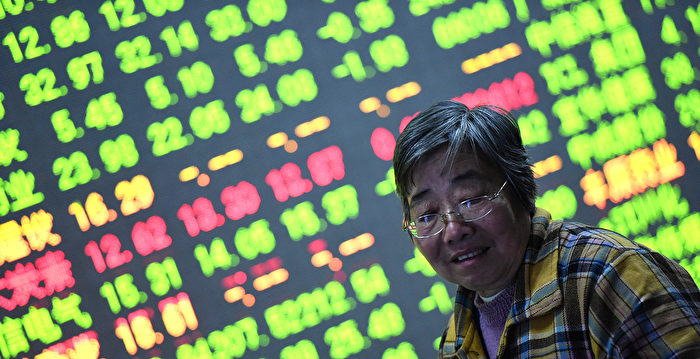[Epoch Times, October 2, 2022](The Epoch Times reporter Li Bing comprehensive report) Recently, A-share white horse stocks have been frequently “killed”, from WuXi PharmaTech to Angel Yeast, and then to BYD, A-shares are “killed” every day A big white horse. According to statistics, the total market value of A shares in the first three quarters of this year evaporated by more than 14 trillion yuan, which is equivalent to the total market value of nearly 10 industrial and commercial banks.
With the end of the last trading day in September, the third-quarter market of A shares came to an end, but the performance was obviously not satisfactory.
The data shows that the three major A-share indexes fell sharply in the third quarter, of which the Shanghai Composite Index fell by 11.01%, the Shenzhen Component Index fell by 16.42%, and the ChiNext Index fell by 18.56%. According to the Economic Observation Network, if the time line is extended to the first three quarters, the decline will be even more tragic: the Shanghai Composite Index fell by 16.91%, the Shenzhen Component Index fell by 27.45%, and the ChiNext Index fell by 31.11%.
According to the communication data Datayes! Statistics show that on December 31, 2021, the total market value of A shares was 99.10 trillion yuan; on September 30, 2022, its total market value fell to 84.67 trillion yuan. In other words, the total market value of A-shares in the first three quarters has evaporated by about 14.42 trillion yuan, which is equivalent to the total market value of nearly 10 ICBC or 20 BYDs.
Since the third quarter, institutional heavy-holding stocks, which have always been referred to as “blue-chip growth stocks”, have suffered successive sell-offs and have become the main force in the market’s sell-off: as many as 20 of the top 300 heavy-holding stocks of institutions fell by more than 32% in the third quarter. Only, among them, Oriental Yuhong, Ecovacs, Kanglong Huacheng, and Wingtech Technology fell by more than 40%, close to half.
According to a report by NetEase Finance on September 30, from September 13 to the present, a white horse stock has been “killed” almost every day, and the “killed” white horse stock is from a completely different industry.
On September 13, WuXi AppTec dropped by the limit, the company’s innovative drug track; on September 14, CATL fell by 5%, the lithium battery industry; on September 15, Sungrow fell by 8%, the photovoltaic inverter industry; 9 On January 16, Oriental Fortune fell 10.78%, the brokerage industry.
On September 19, Amic fell 11.65%, medical beauty industry; on September 20, Sanan Optoelectronics fell 7%, semiconductor industry; on September 21, Mindray Medical fell 7%, medical device industry; September 22 , Pien Tze Huang fell 7%, the traditional Chinese medicine industry.
On September 23, Star Semiconductor fell by the limit, the semiconductor industry; on September 26, Zijin Mining fell by 8%, the gold industry; on September 27, it was a relatively clean day; on September 28, Huayou Cobalt fell by the limit, new Energy upstream materials industry; On September 29, Angel Yeast fell by more than 9%, and the food manufacturing industry.
Wang Jing, assistant general manager of China Merchants Fund and director of the first investment management department, said that the market interpretation since the beginning of the year can be roughly divided into three stages. In the first stage, from the beginning of the year to the end of April, the Federal Reserve raised interest rates unexpectedly, the conflict between Russia and Ukraine, and the outbreak of the epidemic in major domestic cities such as Shanghai and Shenzhen, which caused the market risk appetite to drop to freezing point, and the equity market all the way down.
The second stage is from the end of April to the beginning of July. The domestic equity market rebounded to a certain extent after the release of excessive pessimism. The third stage is from the beginning of July to the present, the risk of the domestic real estate market, superimposed the substantial interest rate hikes by the world‘s major economies, and the A-share market has shrunk again.
In addition, in terms of news, the U.S. Senate Foreign Relations Committee passed the Taiwan Policy Act of 2022 (TPA) with a high vote on September 14. The most comprehensive adjustment of U.S. policy toward Taiwan is aimed at enhancing U.S.-Taiwan relations in the fields of diplomacy and military affairs. The Financial Times said the TPA would also ask the White House to impose sanctions on at least five Chinese state-owned banks.
On September 15, the economic and trade ministers of the G7 countries ended a two-day meeting in Berlin. German Deputy Chancellor Robert Habeck told the media after the meeting that the G7 had agreed to take a tougher and more coordinated stance against China on trade issues.
Responsible editor: Sun Yun #
